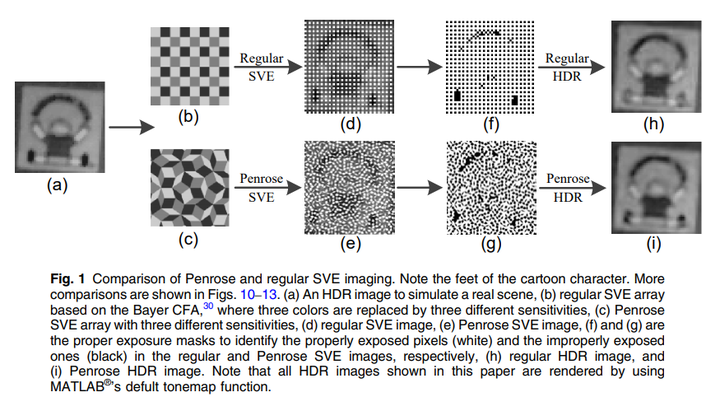Penrose High Dynamic Range Imaging

Abstract
High-dynamic-range (HDR) imaging is becoming increasingly popular and widespread. The most common multishot HDR approach, based on multiple low-dynamic-range images captured with different exposures, has difficulties in handling camera and object movements. The spatially varying exposures (SVE) technology provides a solution to overcome this limitation by obtaining multiple exposures of the scene in only one shot but suffers from a loss in spatial resolution of the captured image. While aperiodic assignment of exposures has been shown to be advantageous during reconstruction in alleviating resolution loss, almost all the existing imaging sensors use the square pixel layout, which is a periodic tiling of square pixels. We propose the Penrose pixel layout, using pixels in aperiodic rhombus Penrose tiling, for HDR imaging. With the SVE technology, Penrose pixel layout has both exposure and pixel aperiodicities. To investigate its performance, we have to reconstruct HDR images in square pixel layout from Penrose raw images with SVE. Since the two pixel layouts are different, the traditional HDR reconstruction methods are not applicable. We develop a reconstruction method for Penrose pixel layout using a Gaussian mixture model for regularization. Both quantitative and qualitative results show the superiority of Penrose pixel layout over square pixel layout.